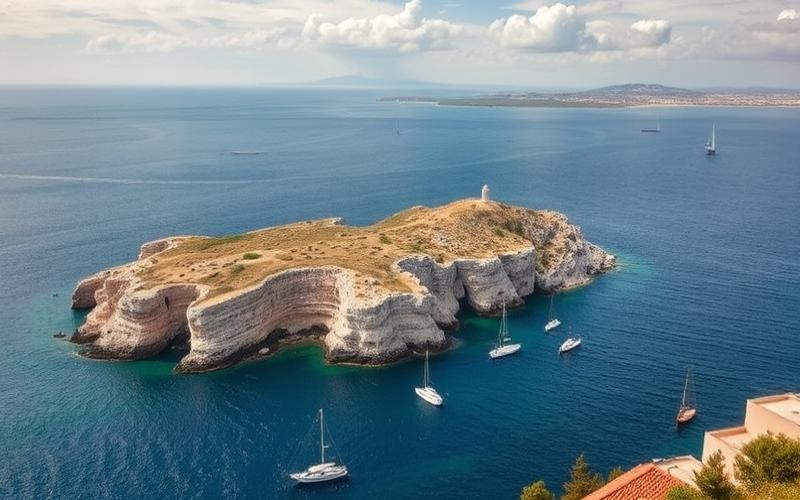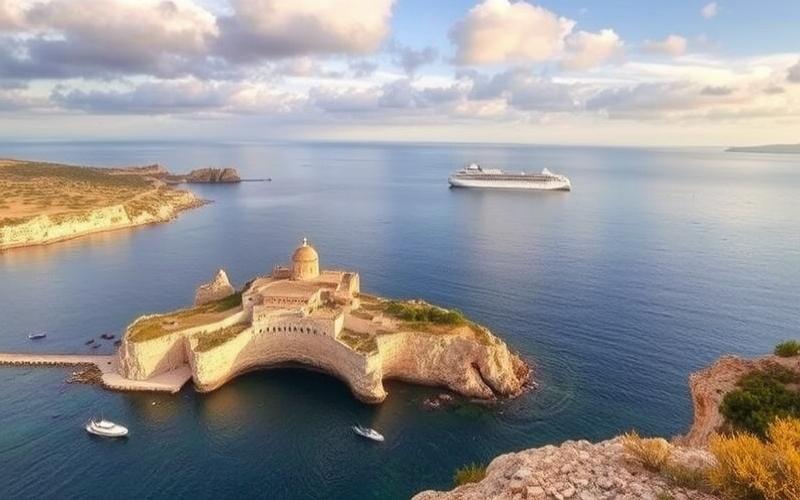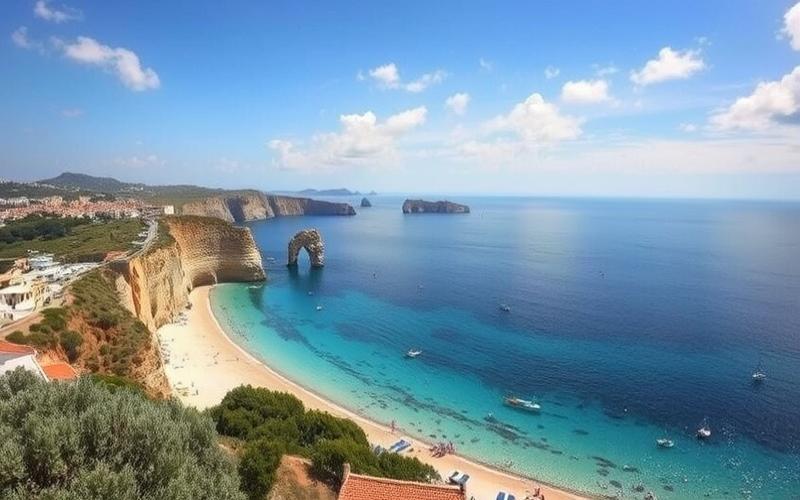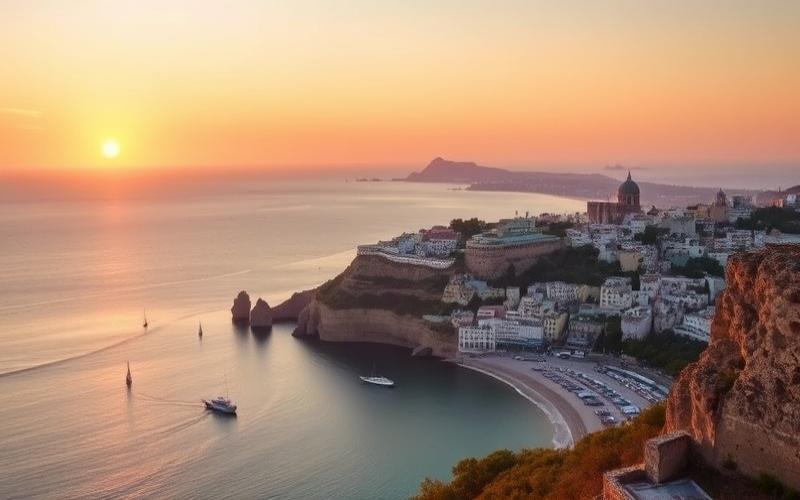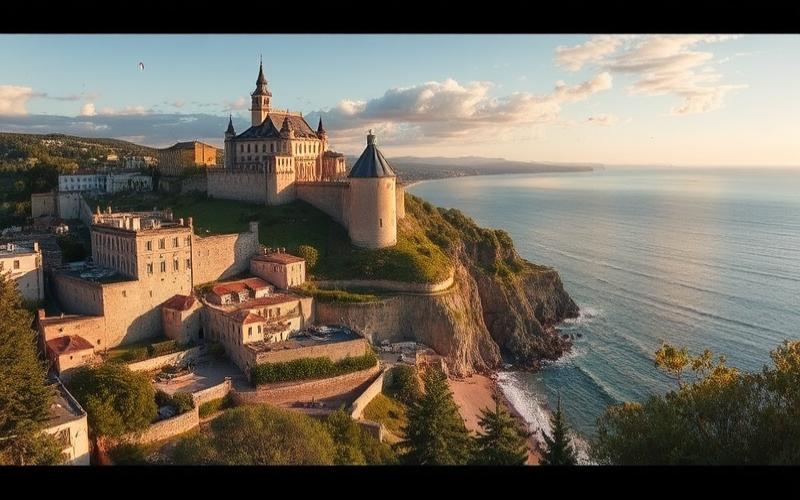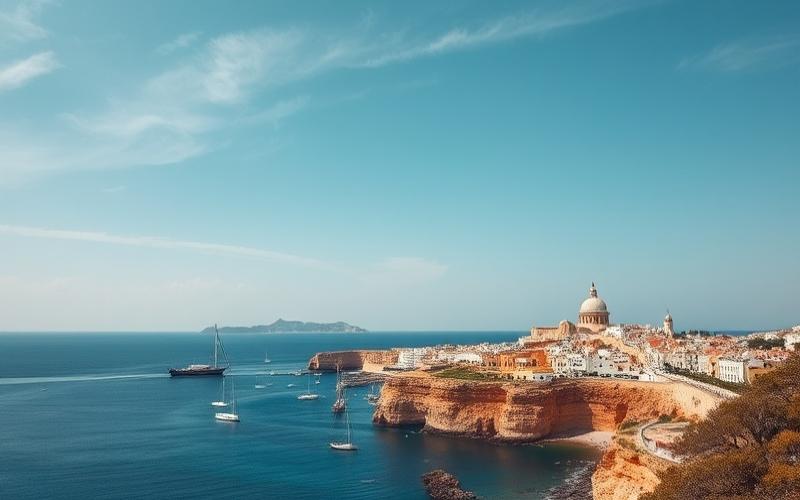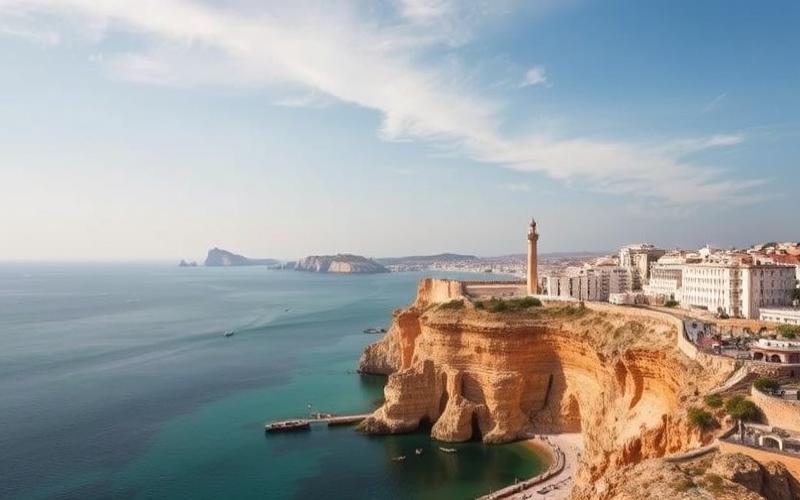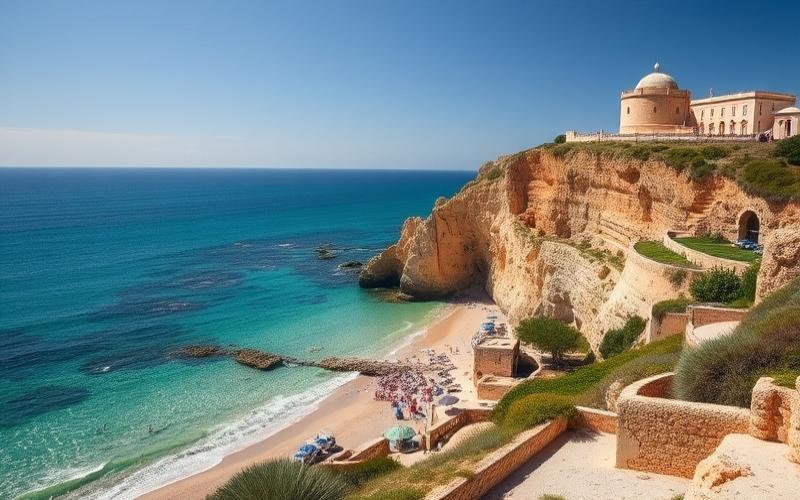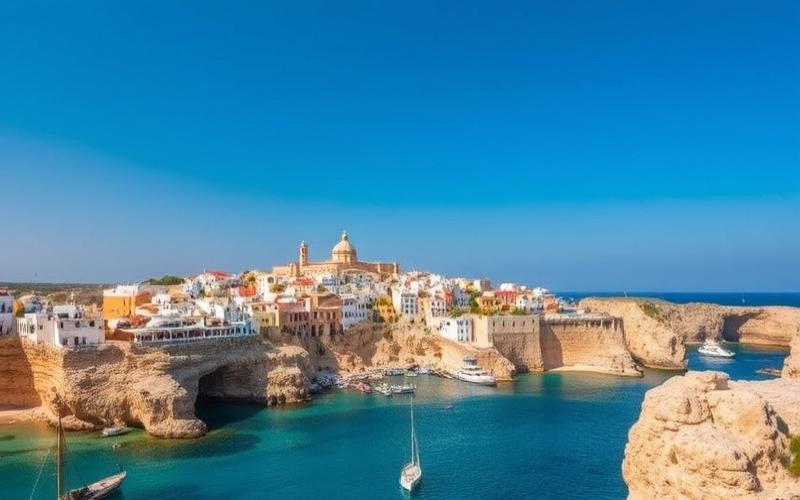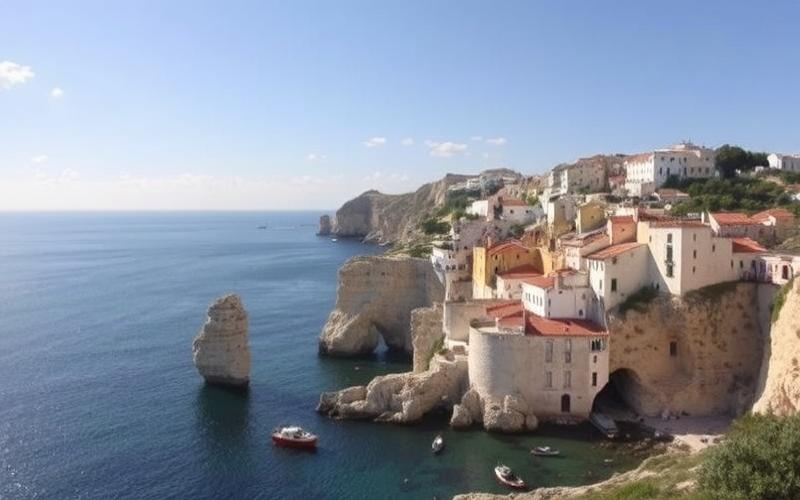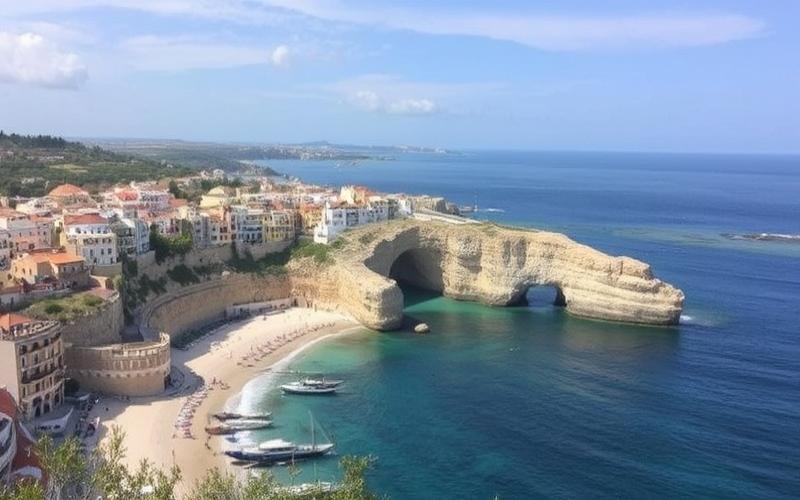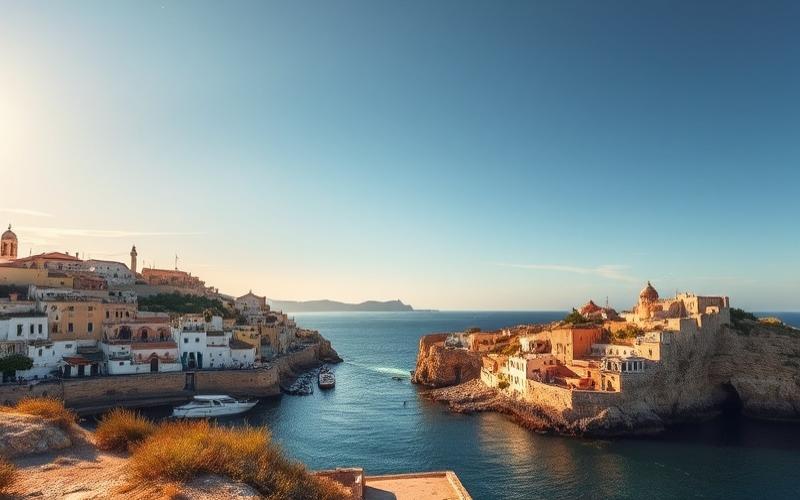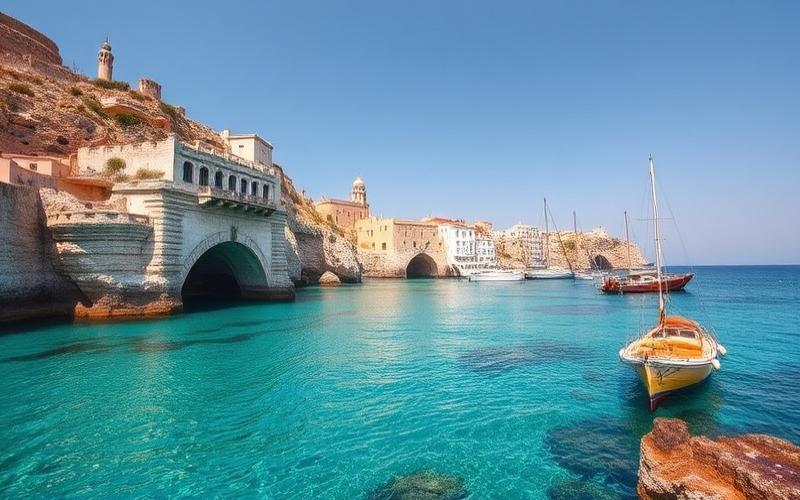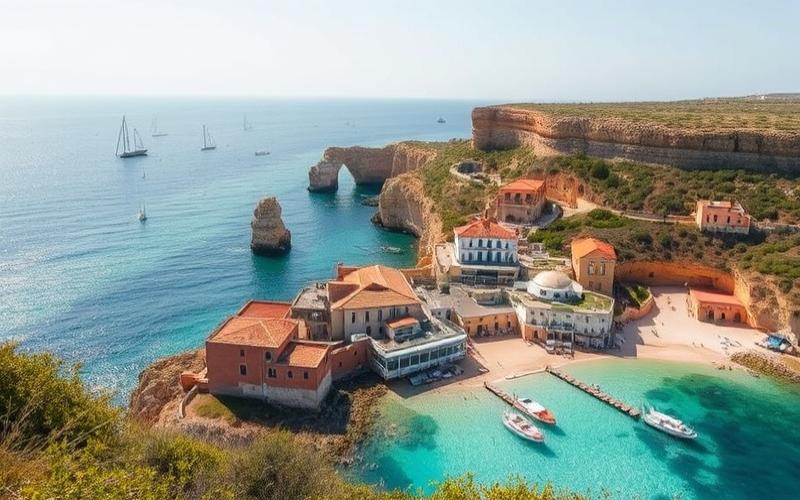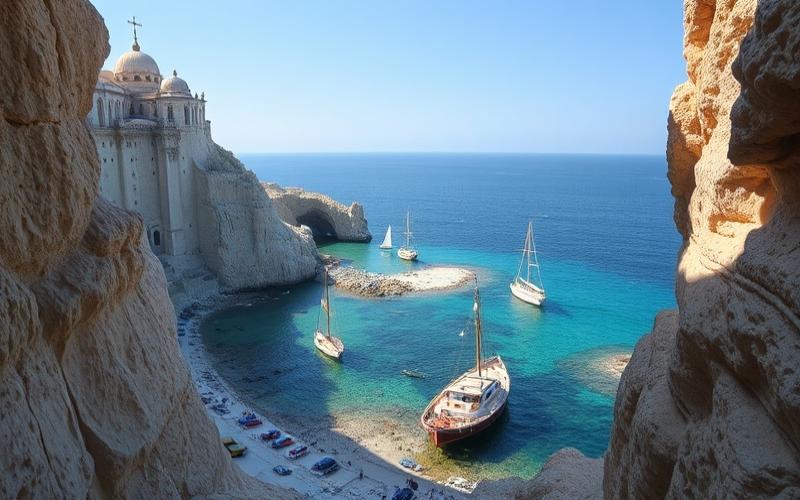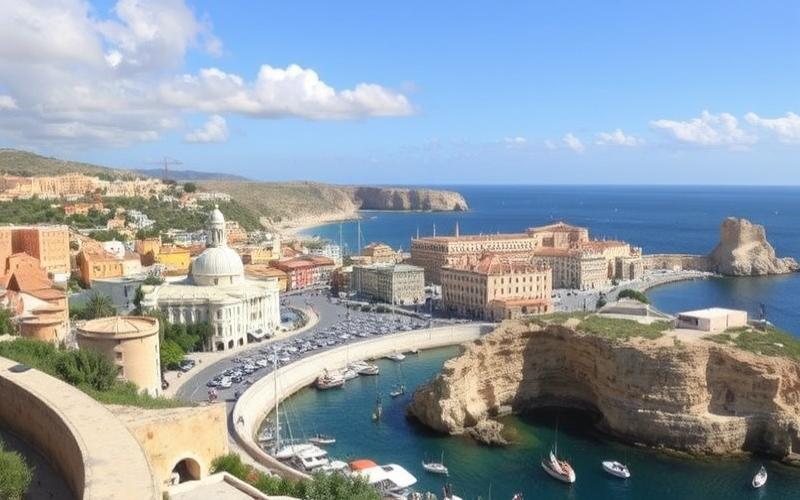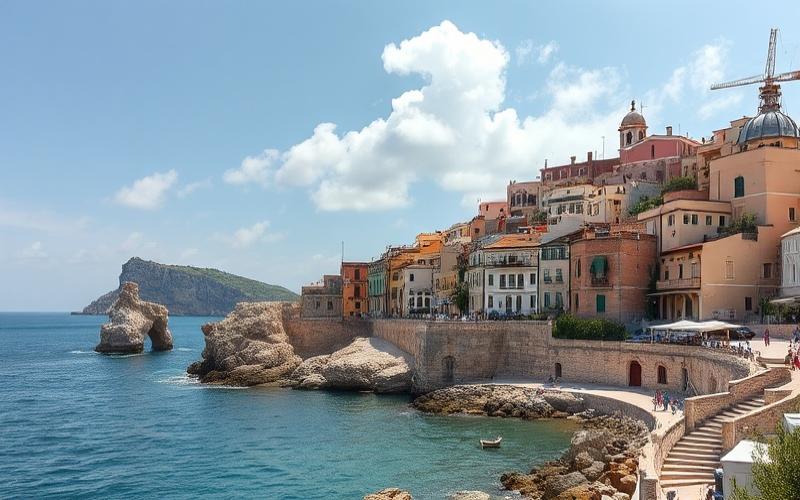
 Published on and written by Cyril Jarnias
Published on and written by Cyril Jarnias
The Maltese archipelago, a Mediterranean gem, has experienced remarkable growth in its real estate market over recent years. With its exceptional quality of life, favorable tax system, and thriving economy, Malta is attracting an increasing number of international investors. Let’s dive into the trends currently shaping the Maltese real estate landscape.
Maltese Real Estate Hotspots: Between Coveted Coasts and Bustling Urban Centers
The Maltese real estate market is characterized by significant geographical diversity, with areas particularly attractive to investors:
Sliema and St. Julian’s: These two adjacent coastal towns remain the undisputed stars of the Maltese real estate market. Their lively waterfronts, trendy restaurants, and nightlife attract affluent international clients. Luxury apartments with sea views are particularly sought after here.
Valletta: The Maltese capital, a UNESCO World Heritage site, is experiencing a spectacular resurgence of interest. The renovation of numerous historic palaces into high-end apartments appeals to wealthy clients seeking authenticity and prestige.
Mdina and Rabat: These historic inland towns are attracting more investors looking for character homes to renovate. Their peaceful atmosphere and exceptional architectural heritage make them prime destinations for clients seeking tranquility.
Gozo: Malta’s sister island appeals with its more rural and preserved ambiance. Traditional stone houses, often with pools, are highly sought after as secondary residences or seasonal rental investments.
Smart City: This new high-tech district under development in the south of the main island is drawing attention from forward-looking investors. Its modern buildings and state-of-the-art infrastructure particularly appeal to young professionals in the technology sector.
Good to Know:
The diversity of attractive areas in Malta allows targeting different types of investors, from heritage enthusiasts to modernity advocates.
Soaring Prices: A Market in Constant Growth
The Maltese real estate market shows outstanding health, with continuously rising prices for several years. According to the latest data from the Central Bank of Malta, property prices saw an average increase of 5.8% in 2024, continuing the upward trend observed over the past decade.
This growth is explained by several factors:
- Sustained demand from both local residents and foreign investors
- Limited supply, especially in the most sought-after areas
- Historically low interest rates, facilitating access to credit
- A dynamic Maltese economy, with one of the highest growth rates in the European Union
- The appeal of the “Golden Visa” program, which allows obtaining a residence permit in exchange for significant real estate investment
It’s interesting to note that this price increase is not uniform across the entire territory. The most sought-after areas, like Sliema and St. Julian’s, have seen more pronounced increases, with prices reaching up to €7,000 to €8,000 per square meter for the most luxurious properties. Conversely, some less touristy regions still offer opportunities at more affordable prices.
Focus on average prices:
– Luxury apartments in Sliema/St. Julian’s: €4,500 – €8,000/m² – Renovated apartments in Valletta: €3,500 – €6,000/m² – Character homes in Mdina/Rabat: €2,500 – €4,000/m² – Villas with pools in Gozo: €2,000 – €3,500/m² – New apartments in Smart City: €3,000 – €5,000/m²
Good to Know:
Despite continuous price increases, the Maltese real estate market remains attractive compared to other popular Mediterranean destinations like the French Riviera or certain Greek islands.
Investment Opportunities: Betting on Diversification
Facing a dynamic but increasingly competitive market, savvy investors would do well to diversify their strategies. Here are some promising avenues:
1. Luxury apartments in coastal areas
High-end apartments in Sliema, St. Julian’s, or Portomaso remain safe bets. Their rental potential is excellent, both for long-term leases and high-end seasonal rentals. The initial investment is substantial, but returns can reach 5 to 7% annually.
2. Renovation of historic properties
Purchasing and renovating townhouses or palaces in Valletta or Mdina offers significant value-added potential. These unique properties, once renovated, can be resold with substantial margins or operated as charming accommodations.
3. Student residences
With the growth of international schools and universities in Malta, the student residence market is expanding rapidly. Investing in apartments near campuses or creating dedicated residences can prove very profitable.
4. Commercial real estate in business districts
Office and commercial spaces in developing areas like Smart City or the Mrieħel business district offer interesting prospects. Demand is strong, and commercial leases ensure stable income.
5. Vacation homes in Gozo
Gozo, more preserved, attracts clients seeking authenticity. Investing in traditional houses with pools, intended for seasonal rental, can generate attractive income during the high tourist season.
Good to Know:
Diversifying investments helps spread risks and take advantage of different dynamics in the Maltese market.
Challenges and Opportunities in the Maltese Real Estate Market
Despite its dynamism, the Maltese real estate market is not without challenges:
Price pressure: The continuous price increases raise concerns about housing affordability for the local population.
Saturation in certain areas: The most sought-after regions like Sliema are beginning to show signs of saturation, with significant densification.
Environmental concerns: Intensive real estate development raises concerns about preserving the island’s natural and architectural heritage.
Dependence on the international market: With a significant portion of demand coming from foreign investors, the market could be vulnerable to global economic fluctuations.
However, these challenges come with opportunities:
Sustainable development: More and more real estate projects are incorporating strict ecological standards, opening a new market segment for “green” properties.
Urban renovation: Renovation programs in less sought-after neighborhoods offer investment opportunities at more affordable prices.
Sector digitalization: The adoption of technologies like blockchain for real estate transactions could strengthen Malta’s appeal to tech-savvy investors.
Medical tourism: The development of this sector could create new demand for suitable housing near medical centers.
Good to Know:
Savvy investors will know how to turn these challenges into opportunities by anticipating market developments and adopting innovative approaches.
The Maltese real estate market presents a contrasting picture, combining economic dynamism, heritage richness, and sustainable development challenges. For investors, the key to success lies in an informed and diversified approach, taking into account local specificities and emerging trends. With its political stability, favorable tax framework, and undeniable tourist appeal, Malta remains a prime destination for real estate investment in the Mediterranean.
Disclaimer: The information provided on this website is for informational purposes only and does not constitute financial, legal, or professional advice. We encourage you to consult qualified experts before making any investment, real estate, or expatriation decisions. Although we strive to maintain up-to-date and accurate information, we do not guarantee the completeness, accuracy, or timeliness of the proposed content. As investment and expatriation involve risks, we disclaim any liability for potential losses or damages arising from the use of this site. Your use of this site confirms your acceptance of these terms and your understanding of the associated risks.

